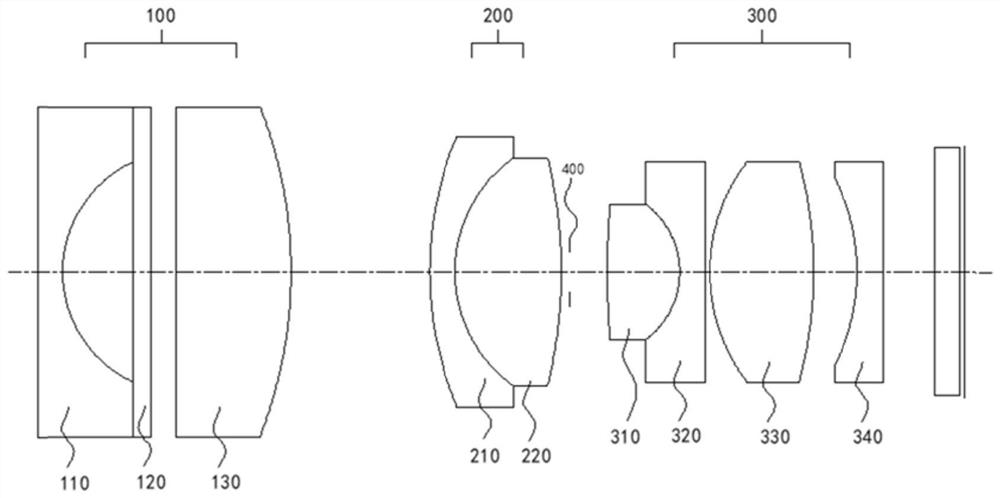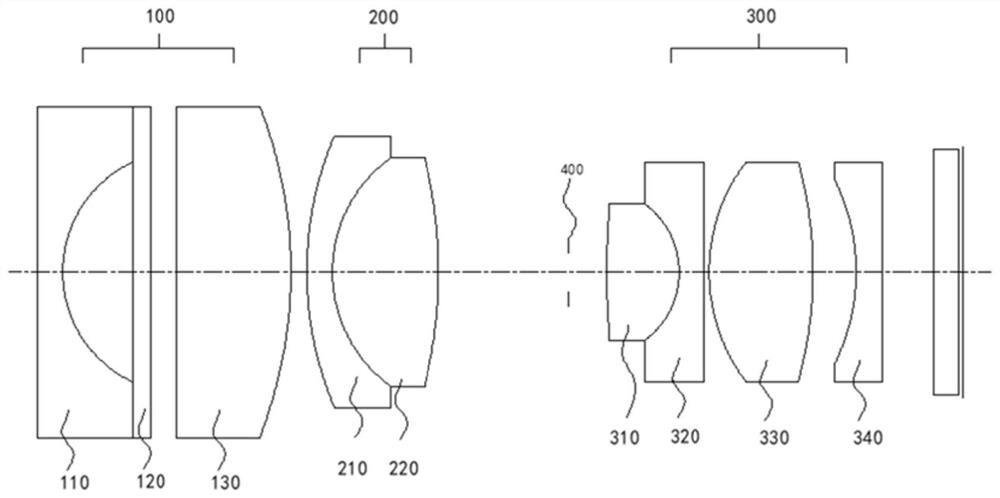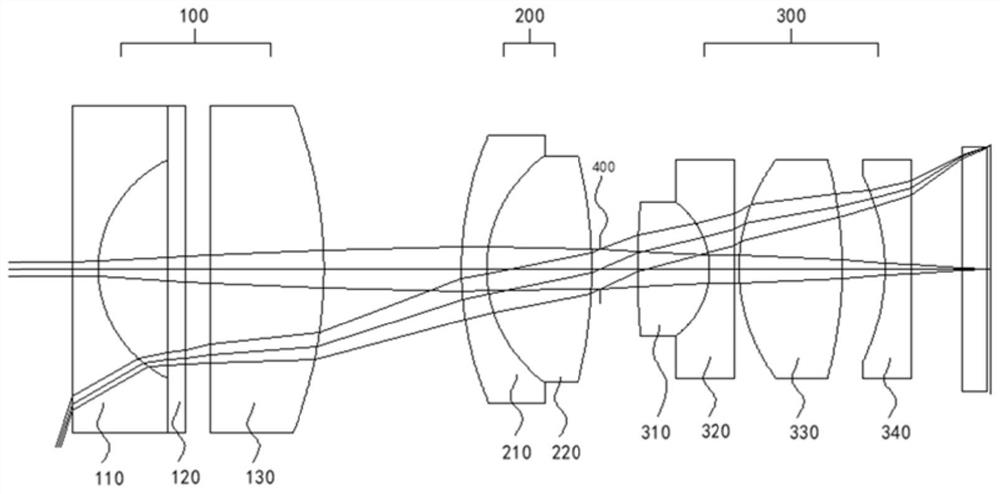Endoscope optical system
An optical system and endoscope technology, applied in the field of endoscopy, can solve the problems of the endoscope becoming too large, unable to match the CMOS image sensor, and not suitable for large-size image sensors, etc.
- Summary
- Abstract
- Description
- Claims
- Application Information
AI Technical Summary
Problems solved by technology
Method used
Image
Examples
Embodiment 1
[0093] see Figure 3-Figure 8 , represents the state when the second lens group 200 moves to the image plane side, that is, the farthest point observation state, and the state where the second lens group 200 moves to the object side, that is, the closest point observation state, based on the above-mentioned second lens group 200 status.
[0094] For details, refer to the data in Table 1, Table 2, and Table 3, which are the parameters and test results of specific experimental tests in this example.
[0095] Table 1
[0096]
[0097]
[0098] Table 2
[0099] routine observation status Zoom in to observe the state at close range do 10.000 2.10 D6 1.636 0.194 D9 0.100 1.542 Field of view 145.000 95 Fno 8.000 8
[0100] table 3
[0101] Conditional value W1 72.5 W2 47.5 |f1 / f3| 0.50 θ 31.99 |f2 / f1| 0.73 |f2 / f3| 0.37 TT / ymax 7.36 d / ft 0.98
Embodiment 2
[0103] see Figure 9-Figure 14 , represents the state when the second lens group 200 moves to the image plane side, that is, the farthest point observation state, and the state when the second lens group 200 moves to the object side, that is, the closest point observation state. Based on the above-mentioned second lens group 200 status.
[0104] Specifically refer to the data in Table 4, Table 5, and Table 6, which are the parameters and test results of specific experimental tests in this example.
[0105] Table 4
[0106]
[0107] table 5
[0108]
[0109]
[0110] Table 6
[0111] Conditional value W1 72.5 W2 47.5 |f1 / f3| 0.59 θ 33.00 |f2 / f1| 0.70 |f2 / f3| 0.41 TT / ymax 6.83 d / ft 1.06
Embodiment 3
[0113] see Figure 15-Figure 20 , represents the state when the second lens group 200 moves to the image plane side, that is, the farthest point observation state, and the state when the second lens group 200 moves to the object side, that is, the closest point observation state. Based on the above-mentioned second lens group 200 status.
[0114] For details, refer to the data in Table 7, Table 8, and Table 9, which are the parameters and test results of specific experimental tests in this example.
[0115] Table 7
[0116]
[0117]
[0118] Table 8
[0119] routine observation status Zoom in to observe the state at close range do 15.0000 2.20 D6 2.354 0.484 D9 0.100 1.970 Field of view 170.000 95 Fno 8.000 8
[0120] Table 9
[0121] Conditional value W1 85.0 W2 47.5 |f1 / f3| 0.28 θ 30.00 |f2 / f1| 0.67 |f2 / f3| 0.19 TT / ymax 7.75 d / ft 1.25
[0122] From the da...
PUM
 Login to View More
Login to View More Abstract
Description
Claims
Application Information
 Login to View More
Login to View More - R&D
- Intellectual Property
- Life Sciences
- Materials
- Tech Scout
- Unparalleled Data Quality
- Higher Quality Content
- 60% Fewer Hallucinations
Browse by: Latest US Patents, China's latest patents, Technical Efficacy Thesaurus, Application Domain, Technology Topic, Popular Technical Reports.
© 2025 PatSnap. All rights reserved.Legal|Privacy policy|Modern Slavery Act Transparency Statement|Sitemap|About US| Contact US: help@patsnap.com



